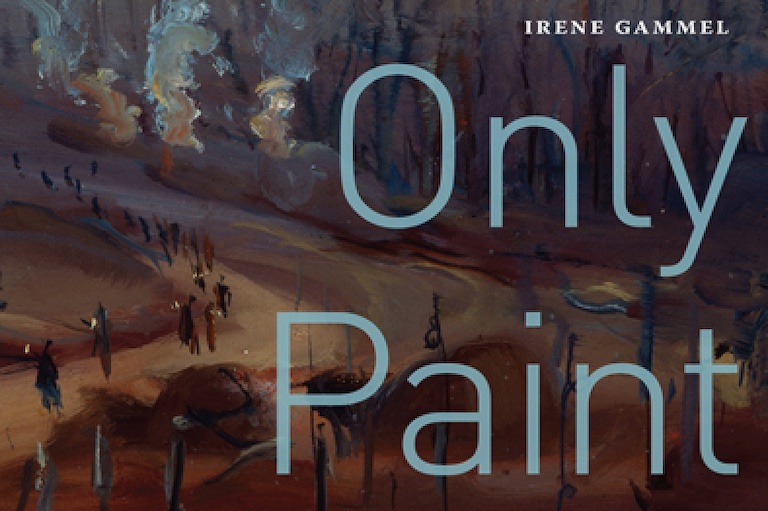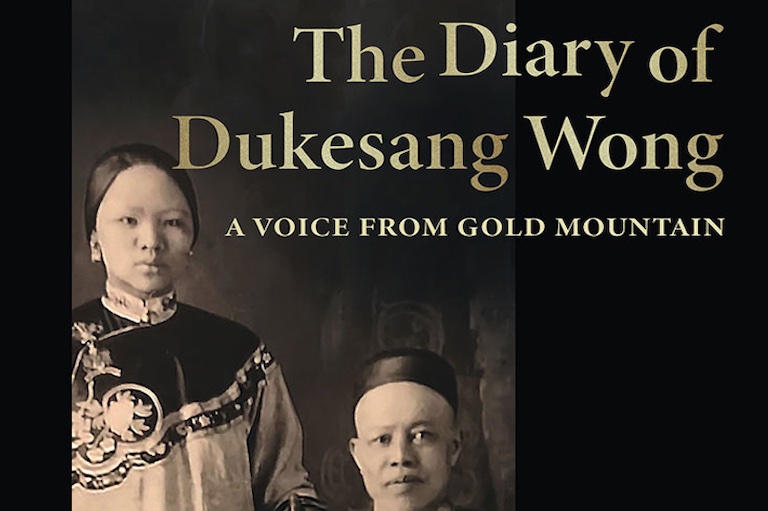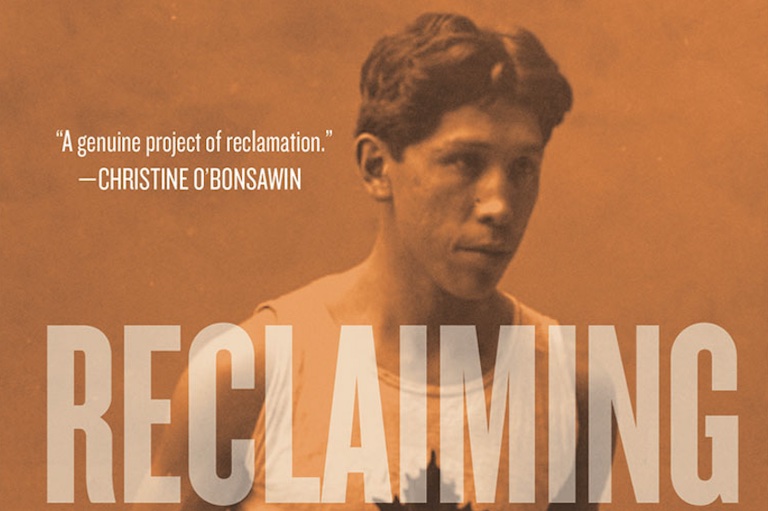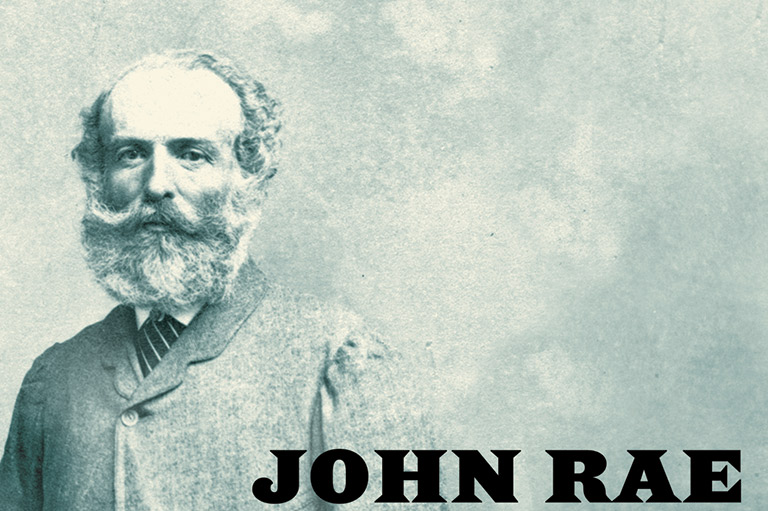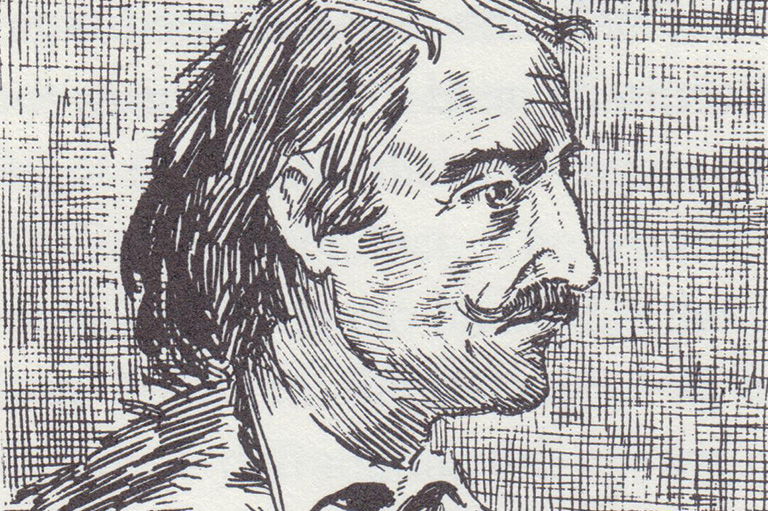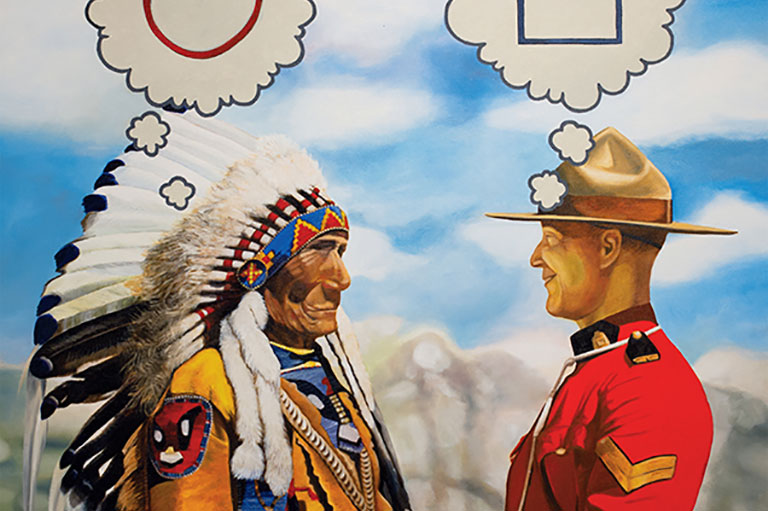Respecting Sacred Relationships
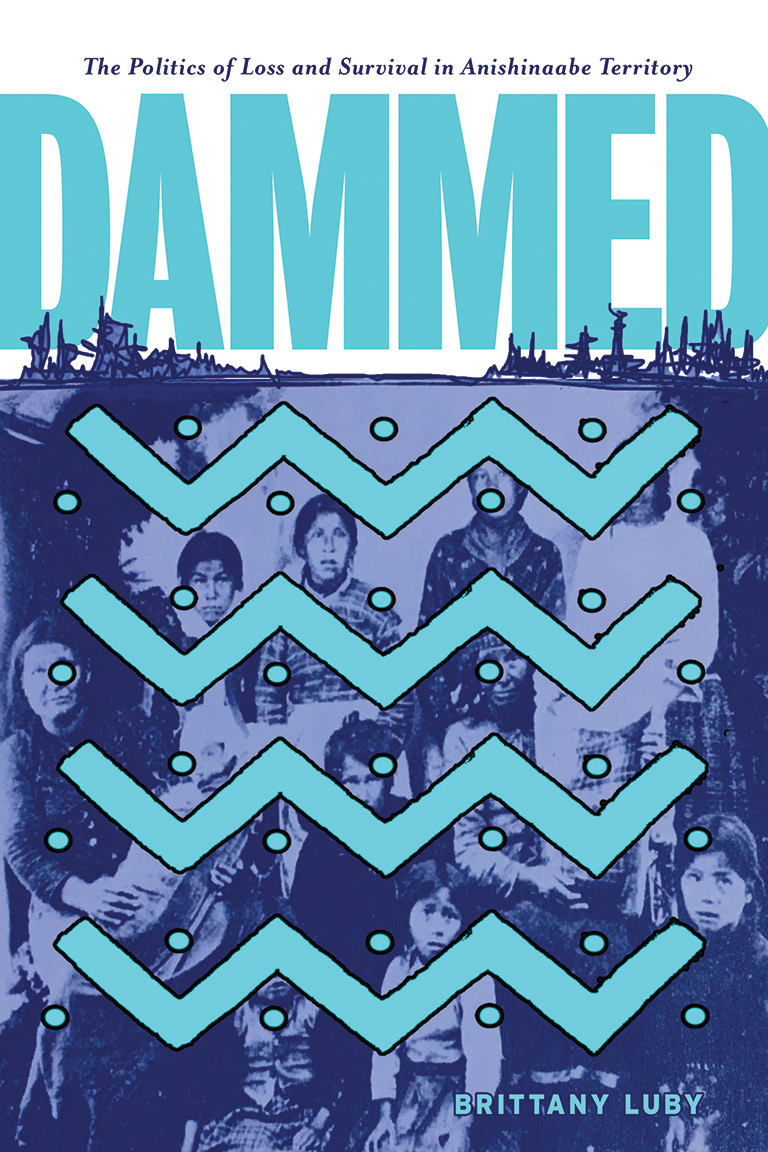
Brittany Luby and her ancestors are from the Lake of the Woods area, most of which is now within northwestern Ontario. In her multiple-award-winning book Dammed: The Politics of Loss and Survival in Anishinaabe Territory, she writes that the Anishinabeg have “since time immemorial” lived and fished along the waterways of the Winnipeg River drainage basin that includes the lake and that extends into parts of Manitoba and Minnesota.
During the nineteenth century, Chief Powassan was among the Anishinabeg present at the negotiation of Treaties they believed would maintain their access to water, which was the source of their well-being and the lifeblood of their environment and culture. Yet the Ontario government and many of the thousands of newcomers to the region around what is now Kenora didn’t see things the same way. They regarded nature as a resource to be controlled and exploited, and they left the Anishinabeg out of key decisions about the lands and waters that supported Indigenous communities and that the members of those communities sought to protect.
Different resource-based industries have had detrimental and often severe impacts upon the Indigenous people of the area. In Dammed Luby focuses upon the hydroelectric development that transformed many of the region’s waterways while providing power for settlers and industries. The Ontario legislature passed an act in 1906 to create the Hydro-Electric Power Commission of Ontario (HEPCO), and it then passed other acts that ignored rights the Anishinabeg had negotiated under 1873’s Treaty Three.
In the following excerpt, Luby explains traditional Anishinaabe life, including the dependance upon and relations to the fish and waters of the area, and she describes a form of Anishinaabe resistance to the assault upon their territory.
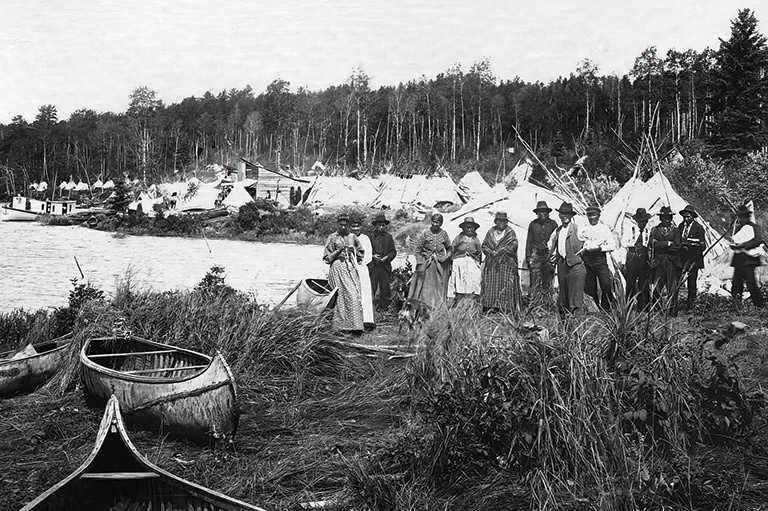
By Water We Inhabit This Place
by Brittany Luby
Imagine that it is 1915.
“Tom, tom,” Chief Powassan’s drum sings. Taut deer sinew reverberates, reminding listeners of the Anishinabeg’s relationship with four-legged beings. The wooden base holds firm, a testament to the strength of plant beings, who have sustained the Anishinabeg for generations. As Powassan plays, sound carries through water in the drum’s base and across the bay. Colonial borders cannot sever such bonds. In the upper Winnipeg River drainage basin, drumming silences scratches made on paper by provincial and federal administrators — trying, so desperately, to divorce Powassan and others from their relations and the water. It quells the grumbling of administrators trying to confine the Anishinabeg to reserves.
Many newcomers do not understand Powassan’s song. Water sounds like money to them. In Powassan’s time, newcomers were lured to Kenora by the promise of steady employment. Circulars suggested that Canada could rely on products manufactured on the north shore of Lake of the Woods. The promise of work changed the demography of Treaty 3 territory. The population of the Canadian North was only about sixty thousand in the 1870s, when the treaty was signed. British men tended to pass through Kenora, then known as Rat Portage, collecting furs from the local HBC trading post before paddling southeast toward Fort Frances. Such movements protected, albeit unintentionally, Anishinaabe water interests, since few newcomers claimed proprietary interests in Treaty 3 territory. Then, in 1876, Frank Gardner, the first permanent white settler, established himself near Kenora. Others followed. By 1901, the Canadian North housed over one hundred thousand souls.
Newcomers felt reassured by Mother Nature, who seemed to guarantee Kenora’s industrial future. Here lay a body of fresh water said to stretch over nearly 4,500 square kilometres. And, as far as they were concerned, there was naught to compromise development. In 1915, the Legislative Assembly of Ontario had revoked An Act for the Settlement of Questions between the Governments of Canada and Ontario Respecting Indian Lands, which had given the Anishinabeg control over waterways running through or around their reserves. It was replaced by An Act to Confirm the Title for the Government of Canada to Certain Lands and Indian Lands, a piece of provincial legislation deeming that waterways “shall not ... form part of such reserve[s].”
Although Ontario had no constitutional authority over reserves, Canada did little to challenge its redefinition of Indigenous lands. Then, in 1924, Superintendent General of Indian Affairs Charles Stewart signed off on the Indian Lands Act, affirming Ontario’s interest in Indigenous waterways and committing Canada to consulting with Ontario about water leases and sales on reserves. This meant that between 1873 and 1924 the Anishinabeg went from negotiating treaties that guaranteed fishing rights and protected their socio-economic interests in water to being excluded from government negotiations about water use in treaty territory. When Ontario redefined water as a public utility in 1905, Anishinaabe control over water resources was challenged by provincial administrators.
In Treaty 3 territory, both newcomers and the Anishinabeg recognized that water was power, but Chief Powassan knew that the two groups saw water differently. Newcomers sought to harness water for hydroelectricity, whereas the Anishinabeg worked to uphold Treaty 3 and to protect the environmental relationships it guaranteed.
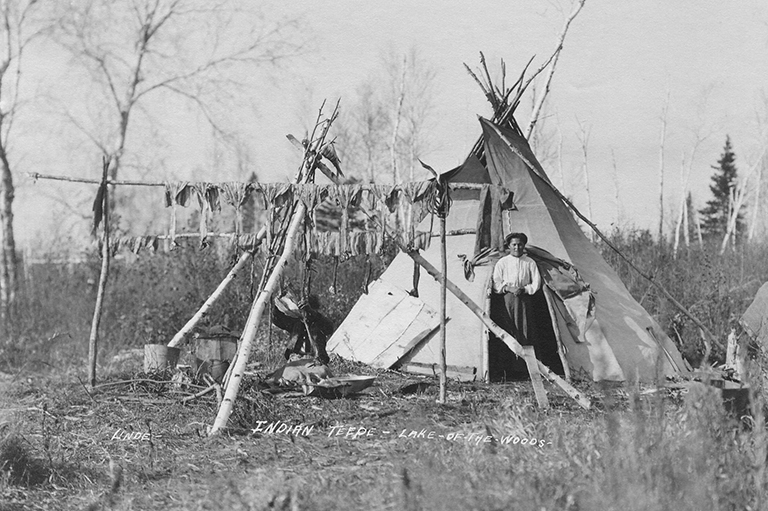
Forever the Use of Their Fisheries
Approximately three thousand Anishinabeg lived at Lake of the Woods when Crown officials penetrated their territory in the mid-nineteenth century. Their subsistence economy consisted primarily of hunting, trapping, fishing, and harvesting. Written evidence of large fish populations in Anishinaabe territories west of Lake Huron extends back to 1660, when trader Pierre-Esprit Radisson compared Lake Superior to a “terrestriall [sic] paradise.” The region was resource-rich. Radisson identified bear, beaver, and enough “assickmack” or whitefish to “make good cheare.” Other historians have used Radisson’s travelogue to provide evidence of large-scale sturgeon fisheries in Anishinaabe territories, locating Radisson’s claim to have seen more than one thousand sturgeon being dried on the south shore of Lake Superior. At the end of the eighteenth century, fur traders noted that the Anishinabeg were difficult trading partners, “content to live upon sturgeon and other native foods rather than engage in trade.” An unidentified observer, writing after 1857, associated Anishinaabe refusal to trade consistently with the Hudson’s Bay Company with an “abundance of sturgeon.” Indeed, large-scale fisheries and a steady supply of food led newcomers to criticize the Anishinabeg as “independent” and “sometimes even a little saucy” during cross-cultural encounters.
Non-written sources such as totemic symbols suggest that fishing has been important to the Anishinabeg since time immemorial. Totemic symbols function as genealogical chains that link bands together. In Ojibway Heritage, for instance, cultural educator Basil Johnston identifies five fish clans, and Anishinaabe families continue to define themselves (and their relations) by clan. For example, Elder Alice Kelly of Dalles 38C Indian Reserve identified as a Sturgeon in 2012.
In the past, as in the present, Anishinaabe men and women tried to emulate the character of their totemic animals. Catfish symbolize breadth and scope (likely intellectual), pike represent swiftness and elegance, sucker symbolize calmness and grace, sturgeon evoke depth and strength, and whitefish symbolize abundance. Totems inform human behaviour. In 2012, Kelly acted like a sturgeon when she shared her community’s struggle to access potable water at the Native American and Indigenous Studies Association conference in Ledyard, Connecticut. She had the emotional strength to communicate Dalles 38C’s intergenerational pain to a public audience. In the late 1800s, much like today, Anishinaabe men and women incorporated their clan fish into how they understood their world. The existence and significance of fish clans reflect the social as well as the economic importance of fishing in the Winnipeg River drainage basin. Through totemic symbols, fishing was part of daily life. Fish provided social markers, behavioural guides, and food.
Totemic symbols indicate a relationship with water resources that extends beyond the element. Treaty 3 Elder Alex Skead explained that “there is a word older than manomin [wild rice] and that is manitou gitigenan, the ‘Great Spirit’s Garden.’” As treaty and Aboriginal rights research director Andy Sky suggests, the concept of manitou gitigenan necessitates an understanding of land and water resources as living gifts from the Creator, and, as with a garden, tending this gift requires ecological knowledge. Elders from Dalles 38C Indian Reserve emphasize three teachings in the maintenance of relations with other-than-human beings: (1) do not infringe on the well-being of other-than-human beings more than is necessary to sustain yourself, your family, and your community; (2) offer ritual tobacco in honour of what has been taken from the land and the river; and (3) make seasonal offerings in gratitude to all Creation. Maintaining the Creator’s gifts requires recognition of the land as a shared resource: Anishinaabe resource managers offered thanks to all creatures who shared the Great Spirit’s Garden. … Chiefs and leaders entered treaty negotiations with the clear goal of maintaining access to manitou gitigenan. Land and water resources were not to be ceded; instead, the Anishinabeg sought to accommodate newcomers while upholding their sacred duty to manage resources.
Anishinaabe treaty demands illustrate the extraordinary value the Anishinabeg placed on water for fishing in the Winnipeg River drainage basin and a clear sense of what they thought future relationships with newcomers should look like. …
From the Anishinaabe perspective, fishing rights were no extravagance. Anishinaabe negotiators had expressed concern that “settlers would interfere with the fisheries, from which they [had] derive[d] their chief means of sustenance” since the 1860s. … Chiefs and leaders refused to sign a treaty that required the surrender of their fisheries or challenged their relationship with water regardless of the draw on federal coffers.
Treaty 3, finally concluded in 1873, granted the Anishinabeg the protection they sought. Treaty Commissioner Simon J. Dawson recalled that Crown representatives promised that the Anishinabeg “would forever have the use of their fisheries.” Commissioners well understood that without such a guarantee no agreement would have been reached. In saying this, Dawson asserted that the Anishinabeg retained usage rights over local fisheries; fishing territories were explicitly identified as theirs. There is no indication that fisheries were to be located on reserve land; rather, the Anishinabeg appear to have protected fishing territories regardless of location. Indeed, Treaty 3, as published by the government of Canada, expressly provides for the right of the Anishinabeg to “pursue their avocations of hunting and fishing throughout the tract surrendered.” …
The concept of manitou gitigenan necessitates an understanding of land and water resources as living gifts from the Creator
Both Anishinaabe and dominion sources demonstrate that hard, realistic bargaining by the Anishinabeg took place. The Anishinaabe position was designed to guarantee the material and cultural survival of the people. Once Treaty 3 was signed, the Department of Indian Affairs and the Department of the Interior surveyed Anishinaabe territories and assigned reserves. The locations of reserves recognized Anishinaabe water use. … Early officials attempted to keep treaty. In an unsigned letter dated 1886 to George Foster, the minister of mines and fisheries, former Treaty Commissioner Dawson was said to oppose non-Indigenous fishing on Lake of the Woods. The author supported Dawson’s position, arguing that “the Indians of this country are a fish-eating people; they live almost entirely on that food.” By December 17, 1890, Dawson had garnered the support of Superintendent General of Indian Affairs Edgar Dewdney, who determined that fisheries on Lake of the Woods “should be reserved for the common use of the Indians of Treaty 3, as from this Lake they have always been in the habit of deriving their principal sustenance.”
The dominion recognized Anishinaabe water use and protected the fisheries accordingly. This protection culminated with An Act for the Settlement of Questions between the Governments of Canada and Ontario Respecting Indian Lands (1891), which confirmed Anishinaabe proprietary rights over water running through or around reserve lands. The 1891 act held that “the waters within the lands laid out or to be laid out as Indian reserves in said territory ... shall be deemed to form part of such reserve.” By confirming Anishinaabe ownership of waterbeds adjacent to reserve lands in the 1894 joint agreement, the governments of Canada and Ontario protected ancestral fishing grounds and thus upheld the treaty right to fish. …
Some of the earliest reserve maps (produced by federal surveyors) in the Winnipeg River drainage basin clearly extend reserve boundaries across adjacent waterways. … That local Anishinabeg relied on riverbeds and built communities along the shore was common knowledge among newcomers and recognized by the Department of Indian Affairs in the immediate aftermath of the treaty.
Although the government recognized First Nations water rights, the Anishinabeg realized that newcomers understood water differently. In these early days of government agreement to protect fishing and water rights, the seeds of encroachment were sown: Treaty 3 guaranteed non-Indigenous peoples access to resources. The Anishinabeg recognized that newcomers used water for dams, canals, and other public works. Recognizing that resource access could lead to misuse, they took steps to ensure that they would be compensated if newcomers broke treaty and infringed on Anishinaabe water rights.
During the treaty negotiations in 1873, Chief Powassan, from Lake of the Woods, demanded that Commissioner Dawson “look to where the waters separate,” rhetorically using water as a symbol of difference. He then reminded Dawson that “the trees you have taken ... are the property of those you see before you.” Powassan recognized that Anishinaabe and non- Indigenous lifestyles and resource uses differed; it was essential to establish a relationship based on mutual respect — where separation demanded negotiation or compensation. On October 1, 1875, Lake of the Woods District Chiefs signed for waterfront reserves. The Chiefs agreed to the following clause: “It is also understood that the Government shall have the right to construct canal locks or other public works ... should they so desire. In such case, the Indians to be duly notified and if the Fisheries should be destroyed thereby the Indians to be fairly dealt with in consequence.” The Anishinabeg thus guarded against having their interests damaged by future public works. If they lost some of their water resources, then they would receive new fiscal resources in exchange. …
Eroding Water Rights and Anishinaabe Resistance
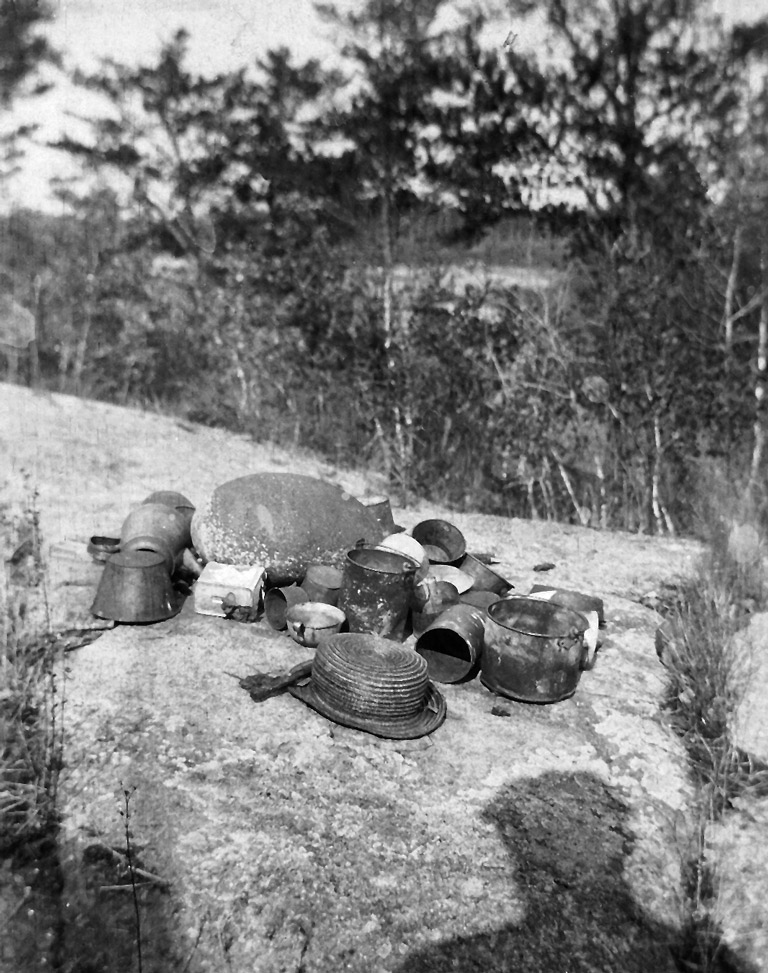
HEPCO proceeded to develop over 186,000 horsepower after 1924, to the detriment of Indigenous communities in Treaty 3 territory, but the Anishinabeg rejected provincial (re)definitions of their reserve lands. They continued to host ceremonies to connect with waters running “between the projecting headlands of any lake or sheets of water not wholly surrounded by an Indian Reserve” years after An Act to Confirm the Title of the Government of Canada to Certain Lands and Indian Lands was passed. Consider, for example, the continued use of the mitigwakik, a ceremonial instrument also known as the water drum, as an act of resistance. The mitigwakik is handcrafted exclusively by members of the Grand Medicine Society. Standing from forty to fifty centimetres high, its frame is made of basswood or cedar. A pine insert, sealed with pitch, forms the drum base. Tanned deer hide is used to create a drumhead. The mitigwakik earned its English name, however, for the water that partially fills its frame. Upon completion, the mitigwakik is “audible at great distances” when played. Given its birth at the hands of a medicine man, the sounding of the mitigwakik “informed one instantly that a medicine ceremony was in session.”
Through these ceremonies, Anishinaabe participants asserted a continued relationship with water and all Creation. Derrick Bresette, an Anishinaabe drummer with Morningstar River Singers in Toronto, suggests that the shape of the drum symbolizes the shape of the Earth. The circular shape of the mitigwakik prompts Anishinaabe viewers to reflect on their relationship with Creation. As Bresette explains, “when the singers are sounding the drum and the dancers are coming around that drum,” they think “about those things that Mother Earth provides for us.” The mitigwakik functions as an inherently political technology. For the mitigwakik to sound, a recognized spiritual authority must stand behind the drum. Audibility depends on the operation of a social system that competes with Western (Christian) world views, particularly hierarchies of nature.
The unity between the Anishinabeg and Creation is further symbolized by the material construction of the mitigwakik. These drums are built entirely of local natural resources. They sound when members of the plant world (basswood, cedar, and pine), the animal world (deer), the water world (H2O), and the human world (drummer) work in unison. According to Paul Nadjiwan, an Anishinaabe drummer from Manitoulin Island, the drum is used “to communicate with the powers of relationship.” Relationships reinforced through ceremonial play counter Western understandings of the natural world.
Cherokee author Thomas King argues that Christian origin stories, particularly the fall of Adam and Eve in Genesis, encouraged Westerners to position themselves in competition with nature. He explains that “the post-garden world we inherit is decidedly material in nature, a world at war — God vs. the Devil, humans vs. the elements.” Members of the Ontario legislature had likely been socialized to believe that water — as an element — could be separated from the Anishinabeg, that boundary lines could be drawn between the reserve and the river, that the 1924 act could be written and approved by provincial officials.
In contrast, members of the Grand Medicine Society rejected Western divisions of the natural world when they drummed; they sounded their sacred bonds to the waters flowing through the Winnipeg River drainage basin. Anishinaabe poet Al Hunter of Manitou Rapids, Ontario, explains: “The earth is water. We are water.” Sometimes compared with blood in Anishinaabe writings, water could not be pulled from Anishinaabe bodies or communities. The politicized message of the drum was (and is) that the Anishinabeg are interconnected with the Winnipeg River drainage basin; it encouraged a mental map that conflicted with Western (re)definitions of Anishinaabe space.
Themes associated with this article
Advertisement
You might also like...

Our online store carries a variety of popular gifts for the history lover or Canadiana enthusiast in your life, including silk ties, dress socks, warm mitts and more!

